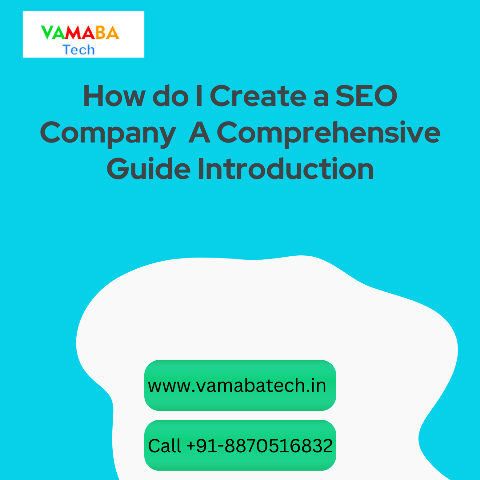How to Improve SEO with 5 Easy Steps
How to Improve SEO with 5 Easy Steps
Are you wondering how to improve SEO and your website’s search engine rankings? Look no further! In this blog post, we’ll walk you through 5 easy steps to help you improve your SEO and boost your website’s visibility in search engine results. Follow these tips and you’ll be well on your way to increasing your organic traffic and website visibility.
keyword research, on-page optimization, link building, and content creation to drive organic traffic
5 Easy Steps for How to Improve SEO
1) Keyword Research
One of the most critical steps in improving your website’s SEO is conducting proper keyword research. This process involves identifying the most relevant and high-traffic keywords that your target audience is searching for on search engines like Google.
Start by brainstorming a list of relevant keywords that relate to your website’s content and industry. You can use various online tools to determine the search volume and competition level of these keywords.
Additionally, it’s important to identify long-tail keywords, which are more specific phrases that users are likely to search for when looking for your products or services.
Once you’ve identified your target keywords, strategically place them throughout your website’s content, including titles, headings, meta descriptions, and within the text itself.
By incorporating these keywords into your website’s content, you’ll improve your website’s chances of ranking higher on search engine results pages (SERPs) and driving more organic traffic to your site.
2) On-Page Optimization
On-page optimization refers to the measures taken on your website to improve its visibility in search engine results pages (SERPs). This includes optimizing your website’s content and code, ensuring that it is relevant to your target audience and search engines.
To begin with, you should ensure that your website has a clear structure that is easy to navigate for both your visitors and search engines. Your website’s design should be clean and simple, with a clear hierarchy of pages and categories that makes it easy for visitors to find what they are looking for.
Your website’s content is the key to its success in search engines. It should be high-quality, relevant, and unique, with a clear focus on the topics that matter most to your target audience. To ensure that your content is optimized for search engines, you should use targeted keywords and phrases throughout your site, including in your page titles, headings, and meta descriptions.
Another important aspect of on-page optimization is the use of meta tags, including meta titles and meta descriptions. These tags help search engines understand what your website is about, and they are used to generate the text that appears in search engine results pages.
You should also pay attention to the structure of your URLs. Your URLs should be simple and easy to read, with targeted keywords and phrases that accurately reflect the content of each page. Additionally, you should make sure that your website’s code is optimized for search engines, with clean HTML, efficient CSS, and properly formatted content.
Finally, it is important to make sure that your website is optimized for mobile devices, as more and more people are accessing the internet through smartphones and tablets. You can use tools like Google’s Mobile-Friendly Test to see how well your website performs on mobile devices, and make any necessary changes to improve its performance.
Overall, on-page optimization is an important part of any SEO strategy, and by following these steps, you can help to ensure that your website is optimized for search engines and your target audience alike.
3) Link Building
One of the most crucial elements of SEO is link building. In simple terms, link building is the process of getting other websites to link to your website. The reason this is important is that search engines view links to your site as a sign that your content is valuable and relevant.
There are many ways to build links, but some methods are more effective than others. One approach that has been proven to be effective is guest blogging. By writing guest posts for other blogs in your niche, you can get a link back to your website in your author bio. Just make sure that you choose high-quality blogs with a strong online presence and a good reputation.
Another best strategy for link building is broken link building. This involves finding broken links on other websites and offering to replace them with a link to your content. This is a win-win situation for both parties since you get a link to your site and the other site gets a working link.
Social media is also a great way to build links. By sharing your content on social media, you can attract visitors to your website who may share your content with others, thus increasing the number of backlinks to your site.
Remember, building links is an ongoing process that requires consistent effort and time. But the benefits are worth it. By improving your link profile, you can increase your search engine rankings, attract more traffic, and ultimately grow your business.
Step 4: Content Creation and Optimization
Creating high-quality and engaging content is crucial for your website’s SEO. Develop content that provides prizes to your direct audience and is relevant to their needs and interests. Naturally integrate your target keywords into the content, ensuring it remains readable and coherent.
Consider creating a blog segment on your website where you put up regularly publish fresh and informative articles. This not only helps to attract more organic traffic but also provides a chance to integrate relevant keywords and set up your website as a true source of information.
When optimizing your content, pay attention to headings, subheadings, and slug points to make it easier for readers to glance over the information. Apply descriptive and engaging titles and meta descriptions to entice users to click on your website’s links in search engine results.
Step 5: Monitoring and Analysis
To ensure the effectiveness of your SEO efforts, it’s essential to monitor and analyze your website’s performance regularly. Utilize tools such as Google Analytics to track key metrics like organic traffic, bounce rate, and conversion rates.
Monitor your keyword rankings to find how your website is performing in look for engine results pages over time. This allows you to identify any fluctuations and make required adjustments to your SEO strategy.
Regularly analyze your website’s backlink visibility to ensure the quality and relevance of the links pointing to your site. undefined any harmful or spammy links that negatively impact your SEO.
Additionally, stay up-to-date with the latest SEO trends, algorithm updates, and industry best practices. SEO is a dynamic field, and keeping yourself informed will serve you to adapt your strategies accordingly.
Conclusion
Improving SEO and enhancing your website’s visibility in search rankings is an ongoing process that requires uniform effort and optimization. By these five easy steps – conducting keyword research, optimizing on-page elements, and quality links, creating and optimizing content, and monitoring performance – you can make substantial strides in up your website’s SEO and attracting more organic traffic.
Remember, SEO is a long-term investment, and results may undergo time. Stay patient, stay persistent, and continue refining your strategies to achieve sustainable increment and achiever in the ever-evolving digital landscape.







